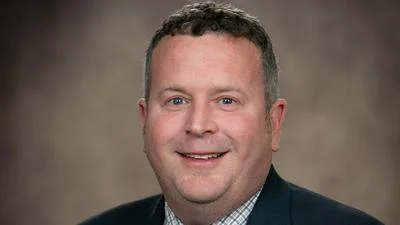The Worst Headache of Your Life | https://newsroom.osfhealthcare.org/
The Worst Headache of Your Life | https://newsroom.osfhealthcare.org/
The Worst Headache of Your Life
There are headaches and then there are excruciating headaches caused by a brain aneurysm, a potentially life-threatening condition that can impact people at any age. If a brain aneurysm ruptures, it becomes an emergency situation that can lead to stroke or possibly death.
Actor Tom Sizemore, known for his work in “Saving Private Ryan,” suffered a brain aneurysm over the weekend and is hospitalized in critical condition.
“A brain aneurysm is a bulge on the side of a blood vessel," says Dr. Ayman Gheith, co-stroke director for OSF HealthCare Saint Anthony Medical Center in Rockford, Il. "I like to compare it to your tire. When you get that welt or bulge on the inlay of the tire and your mechanic tells you that you have to change it. As a bulge happens on an aneurysm that bulge stretches and thins the wall of the vessel and makes it weak. The risk of brain aneurysm is the risk of rupture. If that aneurysm bleeds, especially in the brain and the brain is in a closed box, it’s sitting in the skull. A brain bleed can be life threatening.”
Not all aneurysms will rupture. According to the Brain Aneurysm Foundation, about six million people in the United States have aneurysms that haven’t ruptured. Between 50 to 80% of all aneurysms never rupture. In fact, only about 30,000 of people experience a ruptured aneurysms each year, of which 40% are fatal.
Some aneurysms develop over the course of a person’s lifetime, some are due to family history, and some happen as the result of brain injuries.
“In the big scheme of things aneurysms are typically not as common as other diseases," says Dr. Gheith. "Less than 5% of the percent of the population has them and less than 2% of that population has them treated. We don’t treat every single aneurysm; it depends on the size of the aneurysm, the location of the aneurysm, the age of the person and their medical co-morbidities.”
The symptoms of an aneurysm depend on whether it’s ruptured or not. Symptoms include blurred vision, dizziness, seizures, a mild or severe headache or pain behind or above the eye. Symptoms of a ruptured aneurysm are neck stiffness, blurry or double vision and a sudden, severe headache. But you can also have an aneurysm without any symptoms. According to Dr. Gheith, a majority of aneurysms that have not ruptured are found when medical imaging is done for some other reason.
“The symptoms are very commonly the worst headache of your life," says Dr. Gheith. "This isn’t something subtle. It feels like a ton of bricks were dropped on your head. If anyone is to develop a sudden onset of the worst headache of your life, I consider that a medical emergency. You need to call 9-1-1 and go to the emergency room and be evaluated.”
Treatment for aneurysm can vary based on the size, location, and severity of the aneurysm as well as whether or not it has ruptured. Treatment ranges from close clinical monitoring to surgical clipping, in which an aneurysm is closed using a metal clip or endovascular coiling, in which a catheter is inserted through an artery to your aneurysm and blood flow is blocked, which ultimately closes off the aneurysm.
The bottom line is this: if you are experiencing symptoms, call for help immediately. There is no time to waste, according to Dr. Gheith.
“In my mind there are few things that put more fear in someone’s heart than hearing they have a brain aneurysm," says Dr. Gheith. "The take home message is brain aneurysms are not terminal diseases. These are processes that are scary, but it’s something we can treat and it’s something that can be treated very safely these days with the devices and the tools we have at our disposal.”
Original source can be found here





 Alerts Sign-up
Alerts Sign-up